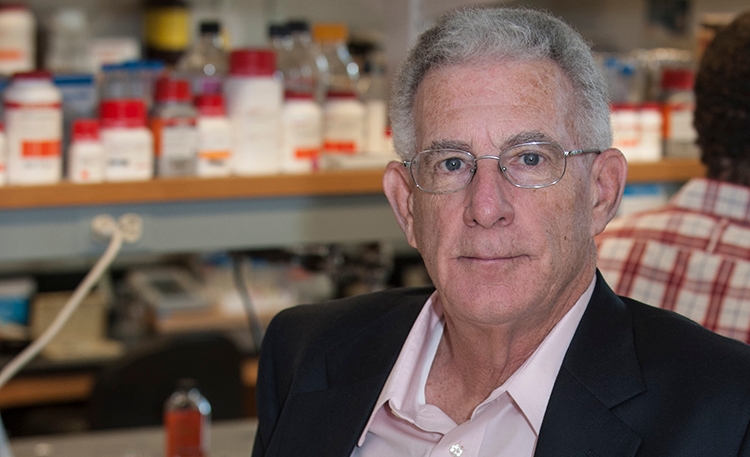
By
During the past century, two dominant views have emerged about the origins of cancer: a genetic disease set on its course by cellular mutations; and a disease that is metabolic in nature, fueled by cell-damaging environmental and biological agents.
In his new book, Cancer As A Metabolic Disease, Professor of Biology Thomas N. Seyfried offers an expansive review of the metabolic theory of cancer, from its origins to current research findings to its role in the development of new treatments and therapies in order to fight the deadly disease.
Seyfried, a lipid biochemist, has conducted research into tumor growth and metabolism, as well as dietary approaches to “starving” tumor cells so as to inhibit their growth. A member of the editorial boards of Nutrition & Metabolism, the Journal of Lipid Research, and Neurochemical Research, Seyfried said he wrote the book because the research and medical communities need as expansive a definition as possible as to the origins of a disease that has maintained a steady killing pace despite the declaration of the War on Cancer in 1971.
Despite gains in research, diagnosis and treatment, cancer killed 571,000 Americans in 2011, compared to 335,000 deaths in 1971. Seyfried says the death toll requires a revisiting of both the latest research and the pioneering works of early 20th-century scientists like Otto Warburg, who laid the foundations for the metabolic theory of cancer shortly before World War I.
“This book is not for my generation,” said Seyfried. “This book is for young doctors now coming out of medical school who are looking for a better way to fight cancer. I hope it can be a part of a new era of cancer research, diagnosis, treatment and management.”
Contrary to the theory that cancer is determined by genomic instability in the nucleus of a cell, the metabolic theory of cancer holds that cancer’s deadly path begins in the mitochondria, where cells generate energy.
Advances in genomics have focused research and treatment efforts on therapies and procedures capable of blunting mutations that lead to cancer. It is a daunting task, as researchers have already uncovered as many as 100,000 mutations in the genomes of most adult cancers, such as breast, ovarian, pancreatic and brain, and are expected to uncover as many as one million more mutations over the next 10 years.
In recent years, leading cancer scientists have called for a research shift “toward understanding the chemical reactions within cancer cells,” as Nobel laureate James D. Watson urged in 2009.
Seyfried has focused his research on the damaging impact of carcinogens on the mitochondria, which causes cellular inflammation and disrupts the cell’s respiratory functions. Some oxygen-deprived cells die, but others survive by transforming glucose into energy, resulting in a fermentation process that yields byproducts such as carbon dioxide and lactic acid.
This mitochondrial injury, Seyfried says, fuels metastasis not just in the form of cells that break away from the primary tumor, but in cells that become infection-fighting white blood cells known as macrophages or a hybrid attack cell structure created from macrophages and cancer cells.
As for the cause-and-effect debate between the two cancer theory camps, Seyfried says research points to damaged respiratory function and fermentation as factors that then produce genomic damage. Still, Seyfried and other researchers note that there are clear links between some forms of cancer and genetic origins, though these origins also involve mitochondrial dysfunction.
But the years of metabolic research Seyfried has conducted and the studies he reviewed for the book show that restricting access to the fuels needed for cancer cell growth (glucose and glutamine) can compromise cancer cell survival. Combined with lifestyle changes, therapies that focus on mitochondrial health could help to prevent or reduce the risk of cancer, he said.



